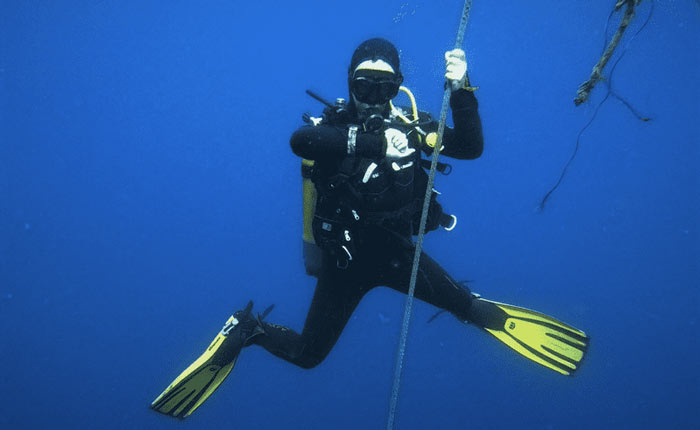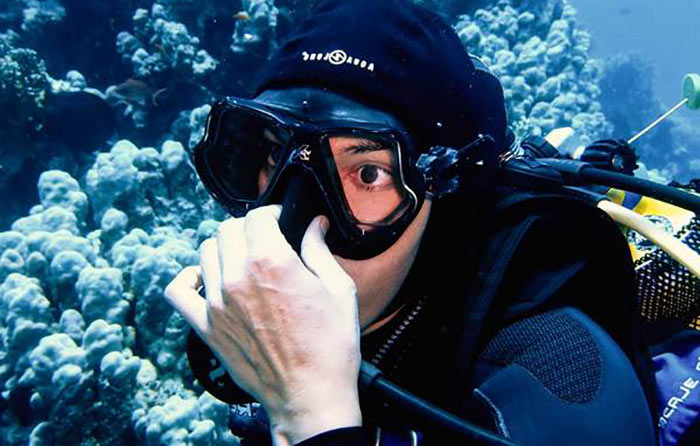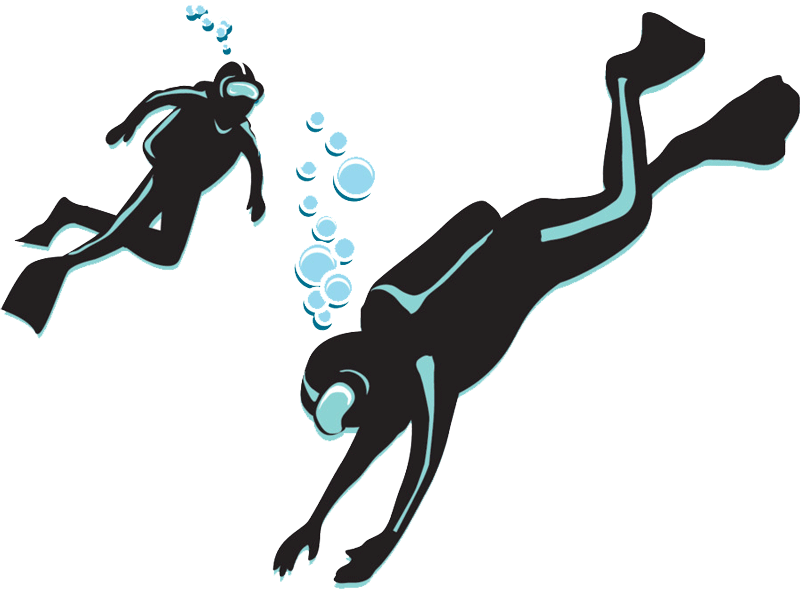The Importance of Decompression in Diving
Diving in Lanzarote offers us the opportunity to discover the great wonders and mysteries of the seabed.
However, in order to enjoy this practice to the maximum, it is necessary to pay attention to the important factor of decompression in diving.
Following the instructors' rules on this subject will ensure safe and fun-filled dives.
However, there are many questions that can arise, so if you are asking yourself questions such as What is decompression in diving?
Why is it so important? Or what is decompression sickness? We answer all your questions now!

Why is Decompression Important in Diving?
Why is decompression important in diving? Before delving into its importance, it is necessary to know exactly what decompression in diving is.
This consists of stops to be made underwater, specifically at the time of ascent. It is necessary for any dive, because in this type of practice we have breathed pressurised air.
At the end of the activity, the excess inert gas must be expelled from our body so that it can recover and adapt again to the surface environment.
If this is not taken into account, something called a decompression accident occurs, which produces nitrogen bubbles in our bloodstream due to the high pressure.
These can be large enough to block our veins.

Who should perform Decompression Stops?
They are recommended for all divers who need to push the limits without decompression.
The duration of these stops will be determined by the depth and time taken for the activity. In this way, decompression sickness can be prevented.
When should Decompression Stops be performed?
There are two options for determining the required decompression stops.
The first are the decompression tables of recognised federations such as the French Federation of Underwater Studies and Sports (FFESSM) and even those commonly used by the Professional Association of Diving Instructors (PADI).
In this case, during your dive training you will have to learn how to read and use them in the correct way.
The second alternative are dive computers, whose algorithm calculates our no-decompression limit in real time.
This includes safe dive time, depth and required stops. This data is determined from our dive profile.
In our diving centre in Lanzarote we help you to understand all these requirements and you can always count on us to accompany you during the activity.

Why does Decompression Syndrome occur?
As mentioned above, the high pressure generated by the dives results in the formation of nitrogen bubbles in our body.
This does not happen on the surface because our body expels nitrogen. In water, on the other hand, we assimilate it and it passes into the bloodstream due to pressure. It must therefore be expelled before it reaches land.
At the moment of ascent we go through the desaturation phase which lowers the pressure, at the same time as gases are released from the tissues into the blood and lungs.
However, this process should not occur instantaneously. All excess gas must be expelled slowly, hence the importance of respecting the times according to the duration of the dive and the depth.
This will allow our body to release excess gas through respiration at an assimilable rate.
And what happens if this is not done? Decompression syndrome occurs as a result of critical oversaturation and possible blockage of the blood vessels.
If circulation is blocked in specific areas of the body, respiratory, brain and heart problems may develop.

What are the Symptoms ofDecompressive Disease?
This syndrome may manifest with tingling sensations, pain in arms and legs; dizziness, paralysis, headache, exhaustion or shortness of breath.
They usually occur within a couple of hours after the dive. However, in severe cases, they may be experienced in the later stages of the ascent.
In the event of the above symptoms, it is strictly necessary to inform our instructor and seek medical help.
How to Prevent Decompression Syndrome?
This will be possible thanks to the instructions of our instructor and by means of a dive computer or decompression table. However, other safety measures to consider are:
- Avoid overeating and drinking alcoholic beverages.
- Feed at least 2 hours before the dive.
- Drink plenty of fluids beforehand
- Proper rest and physical fitness
- No heavy exertion before or after the activity.
- If more than 1 dive is planned on the same day, it is recommended to start with the deepest dive.
- Take with us the mobile phone numbers of the doctor or the 24-hour assistance of our diving insurance.
- Strictly follow all rules given by the instructor.
- Undergo a medical fitness test (preferably with a specialist in underwater medicine). This will allow you to rule out any pre-existing illness or medication that may prevent you from performing the activity.

How is Decompressive Disease treated?
The hyperbaric or high pressure chamber is the main treatment for decompression sickness and should be done as soon as possible. It will work by subjecting the diver to the same pressure experienced during the dive.
It will then progressively lower it to mimic the patient's ascent to the surface. In this way, it will allow the nitrogen bubbles in the blood to gradually dissolve.
After this treatment it is necessary to take a rest of 48 hours and, during this period of time, you should not expose yourself to further pressure variations.
An example of this might be flying in an aeroplane or climbing a mountain, thus avoiding triggering another episode.
There is no doubt that scuba diving is one of the most fascinating activities for discovering marine flora and fauna. Therefore, taking the necessary safety measures will make our experience perfect.
Now that you know how decompression works and its importance when diving, do you have any questions or do you want to share your experience with us? We'll read you in the comments! We are available to help you.

